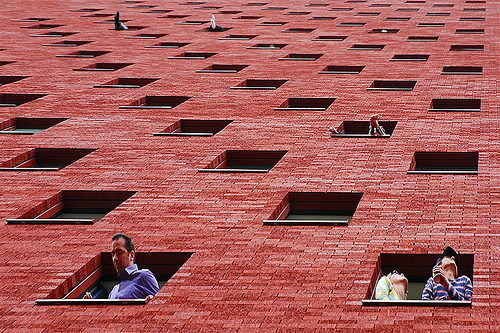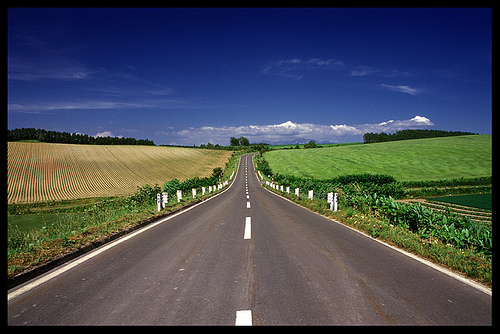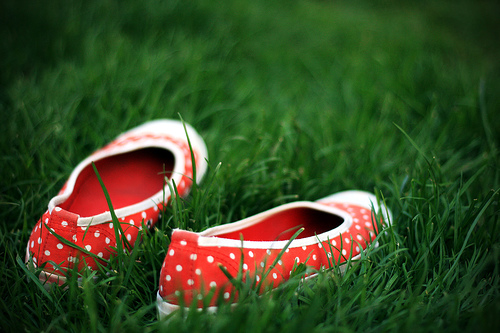Good Composition is a key element of good photographs yet is something that is hard to define.
Instead of looking at composition as a set of ‘rules’ to follow – I view it as a set of ingredients that can be taken out of the pantry at any point and used to make a great ‘meal’ (photograph). Alternatively I’ve often described it as a set of ‘tools’ that can be taken out of one’s compositional tool belt at any given time in the construction of a great image.
The key is to remember that in the same way as a chef rarely uses all the ingredients at their disposal in any dish – that a photographer rarely uses all of the ingredients of composition in the making of an image.
Today I’d like to look at five of the ingredients (or tools, or elements) of composition that I draw on in my photography. They’re not ‘rules’ – just things that I consider when setting up a shot.
Read more on using repetition and patterns in photography.
A symmetrical shot with strong composition and a good point of interest can lead to a striking image – but without the strong point of interest it can be a little predictable. I prefer to experiment with both in the one shoot to see which works best.
Read more on symmetry in photography.
Texture particularly comes into play when light hits objects at interesting angles.
Read more on using light to create texture in your photography.
It can isolate a subject from its background and foreground (when using a shallow depth of field) or it can put the same subject in context by revealing it’s surrounds with a larger depth of field.
Read more on getting shallow depth of field and also this video tutorial on depth of field.
They have the power to draw the eye to key focal points in a shot and to impact the ‘feel’ of an image greatly.
Diagonal, Horizontal, Vertical and Converging lines all impact images differently and should be spotted while framing a shot and then utilized to strengthen it.
These are just some of the elements of composition that I consider in my photography. They reflect my own style and personality but there are plenty more.
Instead of looking at composition as a set of ‘rules’ to follow – I view it as a set of ingredients that can be taken out of the pantry at any point and used to make a great ‘meal’ (photograph). Alternatively I’ve often described it as a set of ‘tools’ that can be taken out of one’s compositional tool belt at any given time in the construction of a great image.
The key is to remember that in the same way as a chef rarely uses all the ingredients at their disposal in any dish – that a photographer rarely uses all of the ingredients of composition in the making of an image.
Today I’d like to look at five of the ingredients (or tools, or elements) of composition that I draw on in my photography. They’re not ‘rules’ – just things that I consider when setting up a shot.
Pattern
There are patterns all around us if we only learn to see them. Emphasizing and highlighting these patterns can lead to striking shots – as can high lighting when patterns are broken.Read more on using repetition and patterns in photography.
Symmetry
Depending upon the scene – symmetry can be something to go for – or to avoid completely.A symmetrical shot with strong composition and a good point of interest can lead to a striking image – but without the strong point of interest it can be a little predictable. I prefer to experiment with both in the one shoot to see which works best.
Read more on symmetry in photography.
Texture
Images a two dimensional thing yet with the clever use of ‘texture’ they can come alive and become almost three dimensional.Texture particularly comes into play when light hits objects at interesting angles.
Read more on using light to create texture in your photography.
Depth of Field
The depth of field that you select when taking an image will drastically impact the composition of an image.It can isolate a subject from its background and foreground (when using a shallow depth of field) or it can put the same subject in context by revealing it’s surrounds with a larger depth of field.
Read more on getting shallow depth of field and also this video tutorial on depth of field.
Lines
Lines can be powerful elements in an image.They have the power to draw the eye to key focal points in a shot and to impact the ‘feel’ of an image greatly.
Diagonal, Horizontal, Vertical and Converging lines all impact images differently and should be spotted while framing a shot and then utilized to strengthen it.
These are just some of the elements of composition that I consider in my photography. They reflect my own style and personality but there are plenty more.









